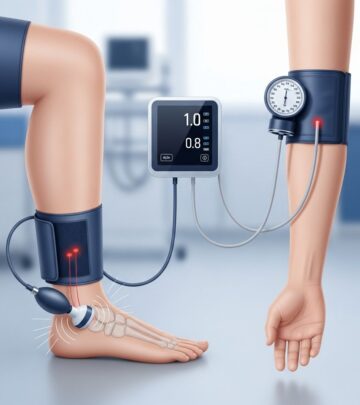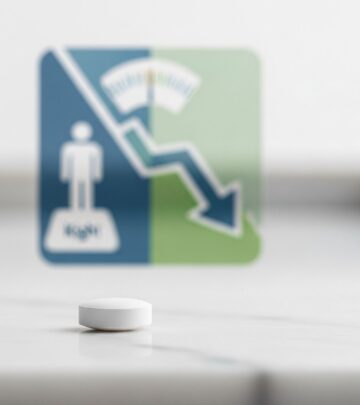Ondansetron: Oral and Oromucosal Use for Nausea and Vomiting Prevention
Comprehensive guide covering ondansetron’s uses, benefits, dosage forms, precautions, and side effects for both oral and oromucosal routes.

Ondansetron (Oral Route, Oromucosal Route): Description, Uses, Side Effects, Dosage, and Precautions
Ondansetron, available in oral and oromucosal forms, is a medication primarily prescribed to prevent nausea and vomiting resulting from cancer chemotherapy, radiation therapy, or surgical procedures. This article provides a complete overview of the drug’s mechanism, forms, recommended dosages, safe usage guidelines, and important precautions to consider.
US Brand Names
- Zofran
- Zofran ODT
- Zuplenz
Description
Ondansetron is a selective 5-HT3 (serotonin) receptor antagonist, designed to block chemical signals in the stomach and brain that trigger nausea and vomiting. It is most commonly used for:
- Prevention of nausea and vomiting caused by chemotherapy medications
- Prevention of nausea and vomiting induced by radiation therapy
- Prevention and treatment of nausea and vomiting after surgical procedures
This medicine is only available via a doctor’s prescription. Ondansetron is classified pharmacologically as an antiemetic.
Available Dosage Forms
- Tablet (standard)
- Tablet, Disintegrating (ODT – Orally Disintegrating Tablet)
- Oral Solution
- Oral Film (Zuplenz)
Injectable forms are also available for hospital or clinical use, but the focus here is on oral and oromucosal administration.
Mechanism of Action
Ondansetron works by blocking the action of serotonin at the 5-HT3 receptors located in the gut and central nervous system. Under stress from chemotherapy, radiation, or anesthesia, serotonin is released and stimulates these receptors, causing severe nausea and vomiting. By inhibiting them, ondansetron effectively reduces or prevents these symptoms.
Indications for Use
- Chemotherapy-induced nausea and vomiting (CINV)
- Radiation-induced nausea and vomiting (RINV)
- Postoperative nausea and vomiting (PONV)
Your healthcare provider may recommend ondansetron for other conditions if deemed appropriate.
How Ondansetron Is Supplied
| Form | Strengths | Usual Route |
|---|---|---|
| Tablet | 4 mg, 8 mg, 24 mg (adult only) | Oral |
| Orally Disintegrating Tablet (ODT) | 4 mg, 8 mg | Oral (melts in mouth) |
| Oral Solution | 4 mg/5 mL | Oral |
| Oral Film | 4 mg, 8 mg | Placed on tongue |
| Injectable | 2 mg/mL | IV, IM (hospital) |
How to Take Ondansetron
Always take ondansetron as directed by your healthcare provider. Dosage and timing may vary depending on the indication.
- For chemotherapy, the first dose is usually taken 30 minutes before starting treatment.
- For radiation therapy, take one dose 1-2 hours before therapy begins.
- For surgical procedures, take one dose about 1 hour before anesthesia.
Additional doses may be prescribed during and after treatment, typically 1-3 times daily for chemotherapy or radiation, or for 1-2 days post-treatment.
Special Instructions for Dosage Forms
- Orally Disintegrating Tablets (ODT): Do not push through foil backing. With dry hands, peel back the foil, remove the tablet, and place immediately on tongue — it will dissolve quickly and can be swallowed with saliva.
- Oral Film: Do not chew. Place directly on the tongue and allow to dissolve.
- Oral Solution: Use a special measuring spoon or oral syringe. Household spoons may lead to inaccurate doses.
Storage Instructions
- Store at room temperature: 20°C to 25°C (68°F to 77°F)
- Temporary exposure: 15°C to 30°C (59°F to 86°F) is permissible during short-term transport.
- Keep medication in a dry, cool place and protect from light.
Precautions and Warnings
Ondansetron is generally well-tolerated, but certain precautions must be observed:
- This medicine should only be taken under medical supervision.
- Inform your healthcare provider about any allergies, current medications, or underlying conditions before taking ondansetron.
- Caution is advised for patients with liver disease since dosage adjustments may be needed.
- Monitor for any unusual heart rhythm symptoms (QT prolongation risk exists).
- Pediatric and geriatric populations may require altered dosing.
- Ondansetron is not intended for routine prevention of nausea outside specific indications (e.g., viral gastroenteritis).
Potential Side Effects
While ondansetron is generally well-tolerated, possible side effects may include:
- Headache
- Fatigue
- Dizziness
- Constipation
- Diarrhea
- Flushing
- Rare: Changes in heart rhythm, allergic reactions, difficulty breathing, skin rash, severe dizziness
Contact your provider immediately if you experience serious symptoms such as palpitations, chest pain, severe dizziness, or signs of a serious allergic reaction.
Dosing Information
| Indication | Adult Dosage | Pediatric Dosage (age ≥4 years) |
|---|---|---|
| Chemotherapy-Induced Nausea/Vomiting | 8–24 mg orally, starting 30 min before chemotherapy; repeat doses per instructions | 4 mg orally, 30 min before chemotherapy; may repeat per protocol |
| Radiation-Induced Nausea/Vomiting | 8 mg orally 1–2 hours before radiation, then 8 mg every 8 hours as prescribed | 4 mg orally 1–2 hours before radiation, then every 8 hours as prescribed |
| Postoperative Nausea/Vomiting | 16 mg orally 1 hour before anesthesia, or 4 mg by injection prior to/after surgery | 4 mg orally before anesthesia |
Exact dosage and schedule should always be confirmed with your medical provider, as individual needs and tolerances vary.
Efficacy and Safety
Extensive clinical trials demonstrate that ondansetron is effective in preventing and treating nausea and vomiting after chemotherapy, radiation, and surgery. Dose-response studies show that a 4 mg dose is generally optimal for postoperative nausea and vomiting in adults. Tolerability across standard dose ranges is excellent, with most patients experiencing limited adverse effects. Laboratory parameters and vital signs typically show no clinically significant changes when compared to placebo in controlled trials.
Drug Interactions
- Potential for interaction with drugs affecting heart rhythm (e.g., antiarrhythmics, certain antidepressants). Risk of QT interval prolongation increases when used in combination.
- Inform your provider of all current medications (prescription, over-the-counter, herbal supplements).
- Caution when used with other serotonin-acting drugs due to risk of serotonin syndrome.
Frequently Asked Questions (FAQs)
Q: What is ondansetron used for?
A: To prevent and treat nausea and vomiting associated with cancer chemotherapy, radiation therapy, and surgery.
Q: How does ondansetron work?
A: It blocks 5-HT3 serotonin receptors in the gut and brain, interfering with signals that trigger nausea and vomiting.
Q: How should I take orally disintegrating tablets?
A: With dry hands, remove the tablet from the packaging just before use. Place it on your tongue to dissolve—do not chew or try to push it through the foil.
Q: What side effects should I look out for?
A: Common side effects include headache, dizziness, and constipation. Seek help for signs of allergic reaction or heart irregularities.
Q: Does ondansetron interact with other medications?
A: Yes, especially those that prolong QT interval or affect serotonin levels. Always share your current medications with your healthcare provider.
Q: How should ondansetron be stored?
A: Store at room temperature (20°C to 25°C/68°F to 77°F), keep in a cool and dry place, and protect from light.
Q: Can children use ondansetron?
A: Yes, pediatric dosing is available for children aged 4 and above per physician recommendation. Doses may differ for young children or infants; consult your care provider for specifics.
Additional Information
- Only use ondansetron for the conditions prescribed; do not self-medicate for routine gastrointestinal upset.
- Notify your provider if you become pregnant, plan pregnancy, or breastfeed while on this medication.
- Do not share your medicine with others, even if symptoms are similar.
- If you miss a dose, take it as soon as remembered unless it is near time for the next scheduled dose. Do not double doses.
Summary Table: Ondansetron Key Information
| Aspect | Details |
|---|---|
| Generic Name | Ondansetron |
| Brands | Zofran, Zofran ODT, Zuplenz |
| Main Uses | Prevention of nausea and vomiting due to chemotherapy, radiation, surgery |
| Major Forms | Tablet, ODT, Solution, Film, Injection |
| Prescription | Required |
| Common Side Effects | Headache, fatigue, constipation, dizziness |
| Precautions | Liver disease, medication interactions, QT interval risks |
References
- WebMD Drug Details: Ondansetron (Zofran, Zofran ODT, Zuplenz)
- MedlinePlus Drug Information: Ondansetron
- European Journal of Anaesthesiology: Ondansetron in Treatment of Postoperative Nausea and Vomiting
- RxList: Ondansetron Dosages and Side Effects
- Mayo Clinic Drug Description: Ondansetron Oral and Oromucosal
- Cleveland Clinic: Zofran (Ondansetron)
- NCBI MotherToBaby Ondansetron Fact Sheet
Read full bio of Sneha Tete












